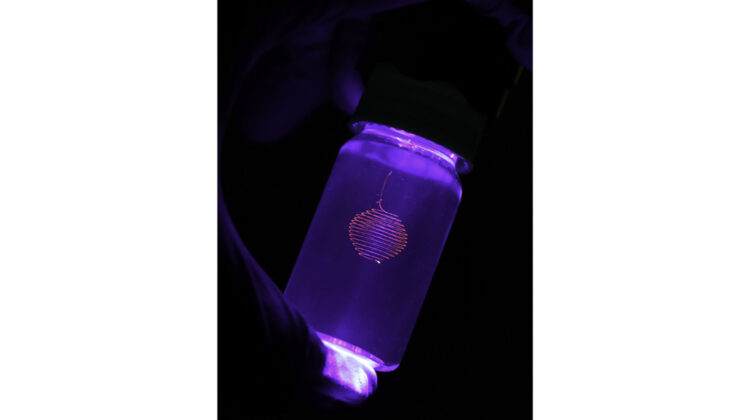
Researchers in the Department of Mechanical Science and Engineering at the University of Illinois Urbana-Champaign’s Grainger College of Engineering have developed an innovative method for creating fine, soft fibres similar to those found in nature usingembedded 3D-printing.
Biomimicry researchers are constantly trying to find new ways to produce and replicate the various useful features observed in nature. Fine hairs and fibres, which are ubiquitous in nature, are used by organisms for various applications, ranging from sensory hairs to the fibres that give hagfish slime its unique consistency.
Unlike traditional 3D-printing methods, in which material is deposited layer by layer in ambient air, embedded 3D printing deposits material in a support medium such as a hydrogel. When printing in air, models must be oriented such that each layer can support the subsequent layer or, for structures with complex architecture, removable support structures can be printed and later discarded. Printing in gel negates the need for these structures, as the gel itself supports the shape of the printed material – allowing for complex shapes, such as helical springs, to be printed more efficiently. Furthermore, the printed part can be cured in, and then removed from, the gel, allowing the gel to be reused for multiple prints.
However, embedded 3D printing previously struggled with printing very thin features, which was reminiscent of 3D printing in air. Filaments below a 16-micron diameter would quickly break before the curing process due to surface tension. The research team wanted to print finer diameters to match the fibres found in nature, such as the silk produced by spiders or the slimy defensive thread extruded by hagfish.
‘In nature, there are many examples of filamentous structures that achieve a diameter of only a few microns,’ said doctoral candidate M Tanver Hossain, who focused on designing the non-Newtonian gel. ‘We knew it had to be possible.’
The researchers employed a method of solvent exchange to inhibit capillary breakup from surface tension. ‘We modified the gel and the print ink so that the ink would cure as soon as it gets deposited in the gel,’ Hossain said. ‘This prevents the filament from snapping because it’s almost instantaneously solid.’ Through this approach, the team achieved a resolution of 1.5 microns. They also experimented with printing through multiple nozzles in parallel, allowing for rapid manufacturing.
‘This research overcomes a long-standing limitation of 3D printing technology – printing soft materials with a diameter as small as one micron,’ said Wonsik Eom, now a faculty member in the Department of Fibre Convergence Material Engineering at Dankook University in South Korea and a former postdoctoral researcher in Professor Sameh Tawfick’s lab.‘Achieving such high printing resolution means we now have the technological foundation to mimic the microfibres and hair-like structures found in nature, which exhibit remarkable functionalities.’
The researchers became interested in embedded 3D printing because of its potential to replicate the properties of hagfish slime, which exhibits mechanical performance superior to other gels due to the presence of micron-scale thread bundles. Professor Randy Ewoldt has been studying the mechanics of hagfish slime for more than a decade with external collaborator Professor Douglas Fudge from Chapman University.
‘We adopted embedded 3D printing as a method to mimic these threads,’ Eom said. ‘Through our research, we discovered that developing high-resolution embedded 3D printing technology enables us to replicate a much wider range of natural structures than we initially expected.’
‘This study relates to the broader research vision of my group – to enable novel engineering functionality by using the complex mechanical behaviour of non-Newtonian fluids and soft solids,’ Ewoldt said of his interest in the work. ‘This perspective integrates across foundational areas of mechanics, from fluid mechanics to solid mechanics and behaviour in-between.’
‘The significance of this method is to produce many geometries of hairs while not having to deal with the downward force of gravity on such fine and flexible hair,’ said Tawfick, who has worked to showcase the method’s usefulness and various applications. ‘This allows us to produce complex 3D hair, having fine diameters, using an ultraprecise 3D printer.’
Through their technique, the researchers plan to pursue more advanced materials development. ‘This method holds significant potential, as ultra-fine and long fibres could be combined with functional materials to enable replication of nature-inspired fibrous structures,’ Hossain said.
‘We are particularly interested in printing fine microstructures that cannot be realised today using conventional semiconductor manufacturing techniques,’ Eom said.
The research has been published in Nature Communications.


